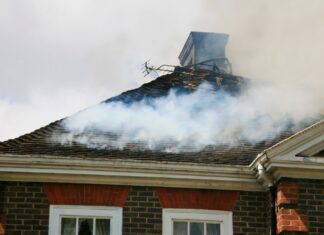
At the end of December, Burlington County was one of three counties recognized in the state recognized by the New Jersey Chapter of the American Civil Liberties Union for their Code Blue program.

When temperatures dip below the freezing point, homeless people are at their most vulnerable. This is when Burlington County issues a Code Blue Weather Emergency. The alert allows local agencies to take in and shelter at-risk homeless during these dangerous conditions.
“A Code Blue declaration is made in Burlington County when winter weather conditions pose a threat of serious harm to individuals without shelter,” Freeholder Director Kate Gibbs said. “When a Code Blue is enacted, it provides for short-term emergency shelters to those in need.”
A Code Blue warning has been in effect in Burlington County since Monday, Dec. 25. At the end of December, Burlington County was recognized by the New Jersey Chapter of the American Civil Liberties Union as one of three counties in the state to meet “their legal and ethical obligations” by developing comprehensive Code Blue plans, according to a release by the ACLU.
“No New Jerseyan should lack access to warm shelter when the weather is this dangerously cold,” ACLU-NJ Staff Attorney Alexi Velez said in the release. “Our law requires local governments to fill in gaps in access to shelter by providing warming centers, where people can safely escape the freezing cold, but apart from the law, it’s just the right thing to do.”
Last May, a state law was passed requiring counties to develop a “Code Blue Alert Plan.” Burlington County’s Code Blue program had already been in place for 11 years at the time the law was passed. Gibbs said the county has four general shelters and one for families.
“Burlington County is the largest geographic county in the state,” Gibbs said. “Finding locations from the entire county’s population of vulnerable folks is difficult.”
The county does not release the locations of the shelters to the general public. Gibbs said this is because it does not want individuals seeking shelter to arrive at a location only to find it full. Instead, those seeking shelter are encouraged to call their Code Blue partner, CONTACT of Burlington County. The non-profit crisis hotline will, in turn, either place the individual at a shelter, or if every shelter is full, they will place them in a motel for the night.
In Moorestown, Police Chief Lee Lieber is the township’s emergency management personnel responsible for overseeing local Code Blue efforts.
“We make our officers aware of the Code Blue Declaration in case they come across any people who may be in need of shelter,” Lieber said. “At this time, we are not aware of any homeless persons living in the township that would benefit from this service overseen by the Health Department.”
Last year alone, the county’s Code Blue program helped 169 adults and 24 families, Gibbs said. She said even prior to the law’s passing in May, Burlington County has always viewed helping the homeless and vulnerable as a priority out of a compassionate desire to serve their neighbors.
“Burlington County has always liked to think of ourselves as leaders,” Gibbs said. “Being fiscally responsible while protecting the most vulnerable is something we believe that every county government should be doing.”
Gibbs said governments at all levels are facing difficult budget constraints following the recession, but protecting the homeless needs to be a priority.
“While it’s great to be praised, we’re not doing this for the praise,” Gibbs said. “We’ve been doing this because we believe this is the right thing to do.”
Individuals in need of shelter or more information about Code Blue, can call CONTACT of Burlington County at (856) 234–8888 or (866) 234–5006.









